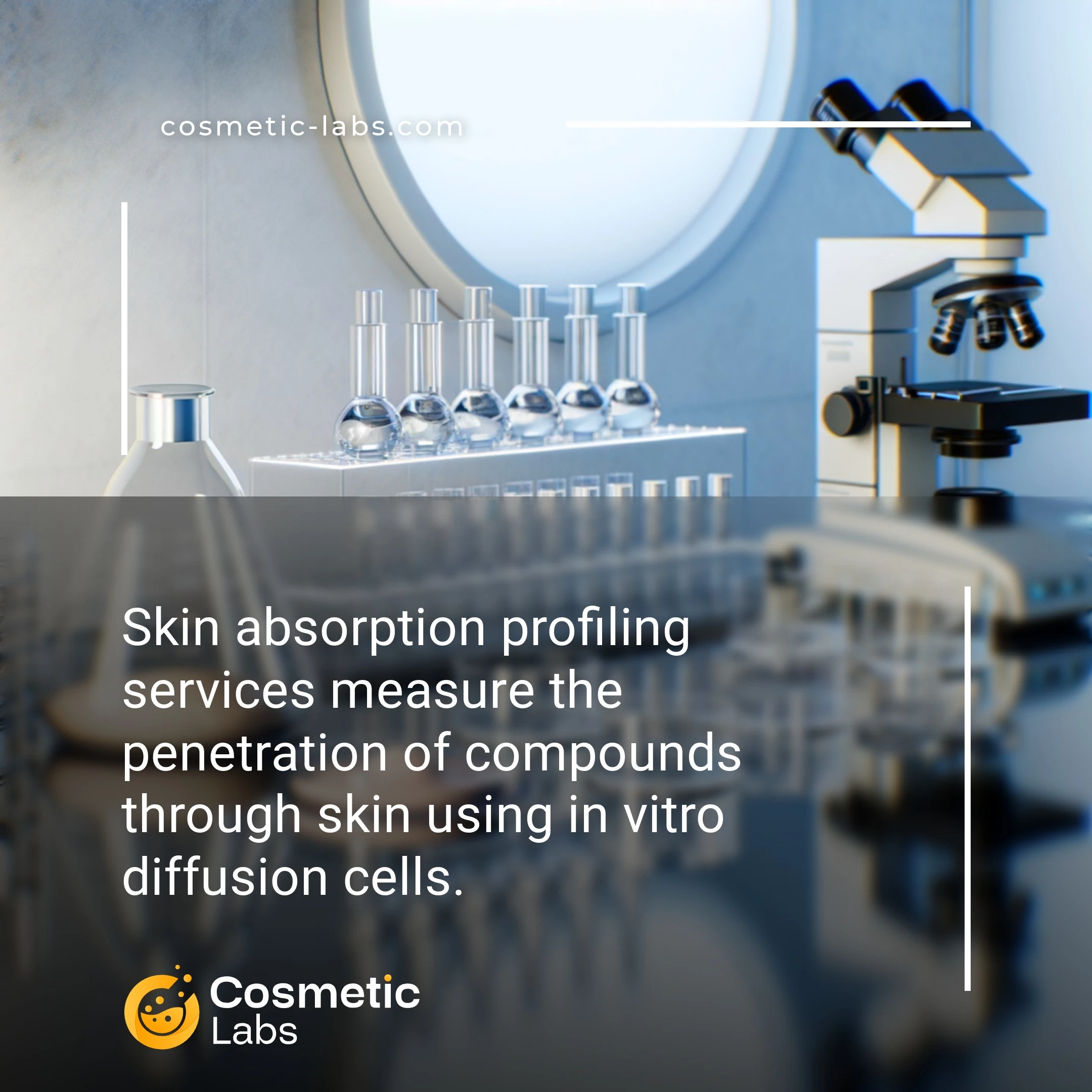Skin Absorption Profiling Services for Effective Cosmetic Development

What is Skin absorption profiling?
Skin absorption profiling services measure how your cosmetic ingredients penetrate through skin layers using Franz diffusion cells and HPLC analysis. Labs test your formulation on human or synthetic skin models to track exactly where active ingredients go and how fast they get there—data you need for safety assessments and efficacy claims. These studies reveal whether your vitamin C serum actually reaches the dermis or if that peptide complex stays on the surface, helping you optimize concentrations before clinical trials.
Why do you need this service?
Cosmetic labs use skin absorption profiling to optimize active ingredient concentrations in anti-aging serums and determine exact penetration depths for vitamin C formulations. These tests reveal whether your retinol cream reaches the dermis within 30 minutes or if your peptide complex stays in the epidermis, providing data that prevents costly reformulations and validates marketing claims before launch.
Who provides Skin absorption profiling services?
All cosmetic labs providing Skin absorption profiling services
There is no company providing these services at the moment.
Skin Absorption Profiling Services
Skin absorption profiling determines how your cosmetic ingredients penetrate different skin layers over time. These preclinical penetration studies help you optimize formulations before moving to clinical trials, saving both time and development costs.
Testing Methods and Applications
Labs use Franz diffusion cells and synthetic membranes to measure ingredient penetration rates. They track how actives like retinol, peptides, and hyaluronic acid move through skin barriers at specific concentrations.
Common absorption profiles include:
- Time-release curves showing ingredient delivery over 24-48 hours
- Depth penetration data for each skin layer (stratum corneum to dermis)
- Bioavailability percentages for active ingredients
- Vehicle comparison studies (cream vs. serum vs. gel)
These profiles help you adjust particle sizes, pH levels, and carrier systems to achieve target absorption rates.
Regulatory Compliance and Documentation
Absorption studies generate data packages that support safety assessments and efficacy claims. Labs provide concentration-time graphs, permeation coefficients, and flux calculations that regulatory bodies require.
Documentation typically covers:
- Test protocols following OECD guidelines 428 or 156
- Raw data files with statistical analysis
- Comparison benchmarks against similar marketed products
- Safety margins for systemic exposure calculations
Partner labs on our platform specialize in both standard and custom absorption protocols. They work with your specific formulation needs, whether you’re developing anti-aging serums, sunscreens, or treatment products requiring controlled delivery.
Practical Applications of Skin Absorption Profiling in Product Development
Skin absorption profiling directly impacts formulation decisions and product claims by revealing how ingredients penetrate different skin layers.
Active Ingredient Optimization for Targeted Delivery
Labs use skin absorption profiling services to map ingredient pathways through the stratum corneum, epidermis, and dermis. Franz cell diffusion tests measure penetration rates over 24-48 hour periods, while tape stripping quantifies ingredient distribution at specific depths.
This data guides formulation adjustments—reducing particle size from 200nm to 50nm can increase vitamin C penetration by 40%. Labs test different carrier systems like liposomes, microspheres, and penetration enhancers to achieve targeted delivery profiles for anti-aging serums, acne treatments, and brightening products.
Safety Assessment and Regulatory Documentation
Absorption profiles establish safety margins by determining systemic exposure levels. Labs measure cumulative absorption percentages and calculate margin of safety (MoS) values for each ingredient.
| Application Type | Key Metrics Measured | Typical Timeline | Regulatory Use |
|---|---|---|---|
| Leave-on products | 24-hour flux rate, total absorption % | 5-7 days | EU SCCS dossiers |
| Rinse-off products | 30-minute penetration, retention factor | 3-4 days | FDA safety assessments |
| Sun care | UV filter distribution, dermal loading | 7-10 days | Global compliance files |
These profiles support product registration in multiple markets. European regulations require absorption data for ingredients above 0.1% concentration, while FDA submissions benefit from permeation studies that demonstrate controlled release or minimal systemic exposure.
